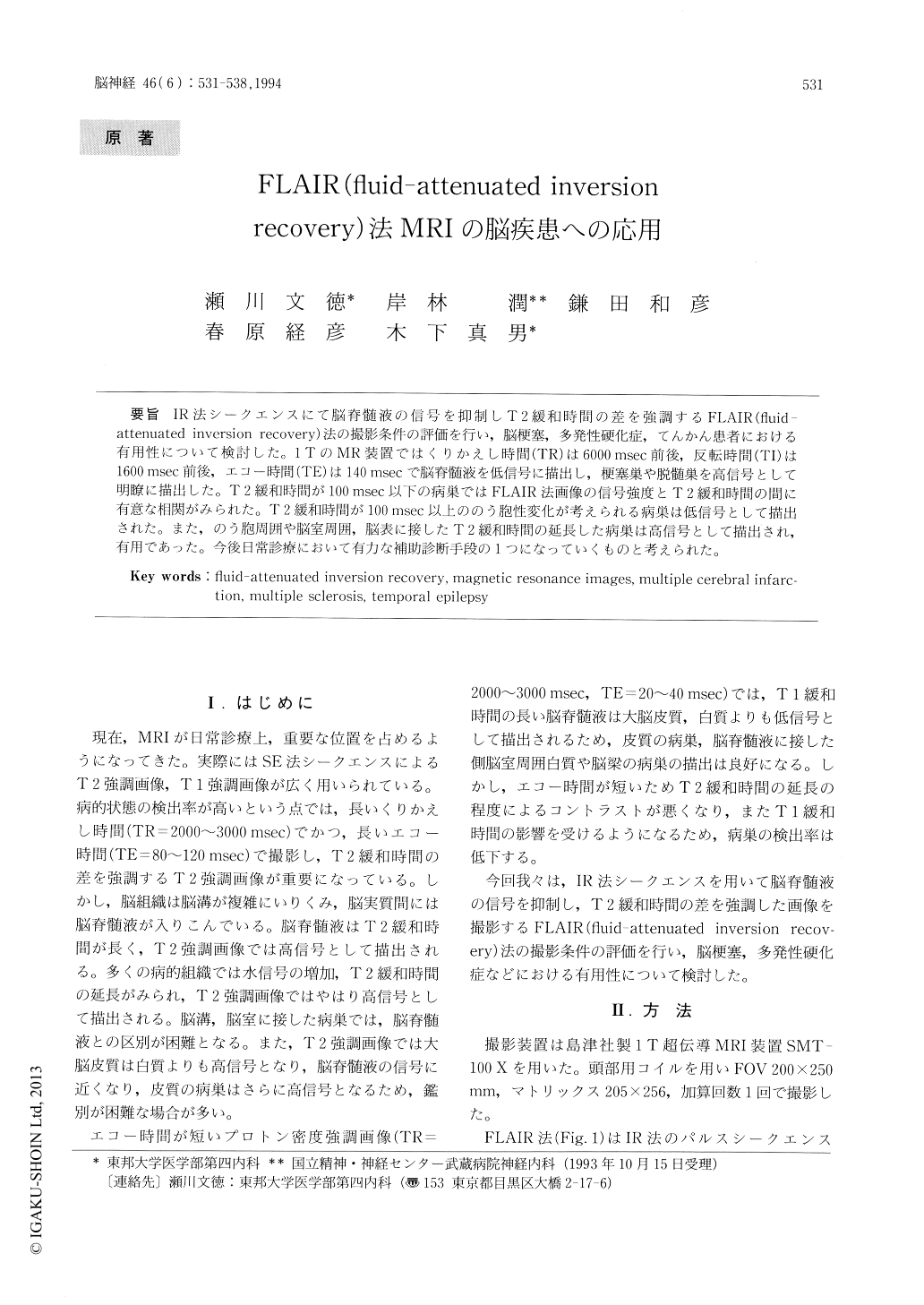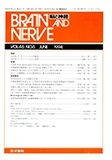Japanese
English
- 有料閲覧
- Abstract 文献概要
- 1ページ目 Look Inside
IR法シークエンスにて脳脊髄液の信号を抑制しT2緩和時間の差を強調するFLAIR(fluid—attenuated inversion recovery)法の撮影条件の評価を行い,脳梗塞,多発性硬化症,てんかん患者における有用性について検討した。1TのMR装置ではくりかえし時間(TR)は6000msec前後,反転時間(TI)は1600msec前後,エコー時間(TE)は140 msecで脳脊髄液を低信号に描出し,梗塞巣や脱髄巣を高信号として明瞭に描出した。T2緩和時間が100 msec以下の病巣ではFLAIR法画像の信号強度とT2緩和時間の間に有意な相関がみられた。T2緩和時間が100 msec以上ののう胞性変化が考えられる病巣は低信号として描出された。また,のう胞周囲や脳室周囲,脳表に接したT2緩和時間の延長した病巣は高信号として描出され,有用であった。今後日常診療において有力な補助診断手段の1つになっていくものと考えられた。
FLAIR (fluid-attenuated inversion recovery) images are MR images obtained with an inversion recovery sequence having a long inversion time (TI) and a long echo time (TE). Twenty healthy adults and twenty patients with multiple cerebral infarction, multiple sclerosis, temporal epilepsy, or brain trauma were examined with FLAIR sequences of several types having repetitive times (TR) of 4000-8000 msec, inversion times of 1200-2400 msec and echo times (TE) of 140-200 msec, and the results were compared with spin-echo sequences (TE=20 msec and TE=90 msec).

Copyright © 1994, Igaku-Shoin Ltd. All rights reserved.


